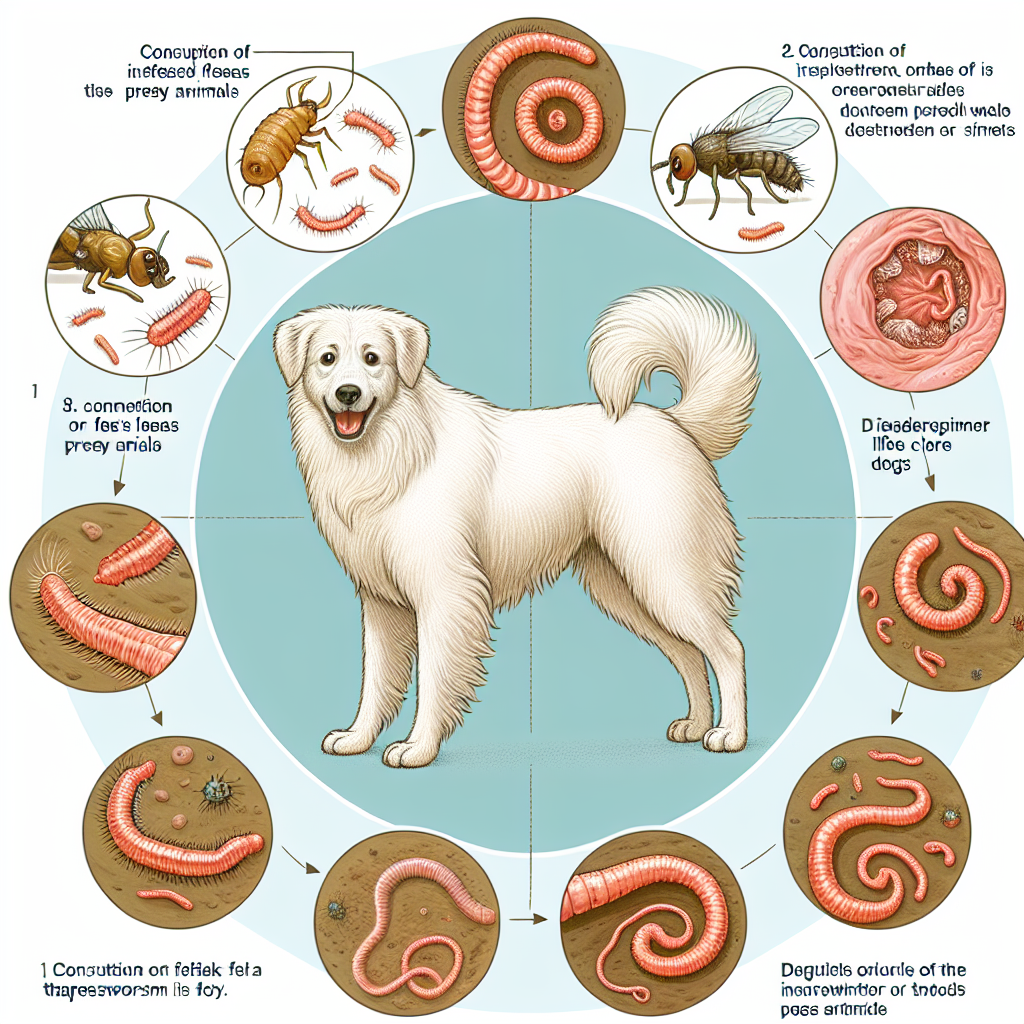===INTRO:===
As a devoted dog owner, realizing that your furry companion could be at risk for tapeworm infection can be unsettling. Understanding how dogs become infected with tapeworms is crucial to protecting your pet’s health. Tapeworms, though often overlooked, can lead to significant health issues for dogs, including weight loss, digestive disorders, and even severe discomfort. This comprehensive guide will illuminate the lifecycle of these parasites, their transmission to dogs, and the risk factors that make your beloved pet vulnerable.
The Lifecycle of Tapeworms and Their Transmission to Dogs
Tapeworms belong to a group of flatworms known as cestodes, and their lifecycle is intricately linked to various intermediate hosts, making them a fascinating subject of study. The most common type of tapeworm affecting dogs is the Dipylidium caninum, which primarily utilizes fleas as its intermediate host. When a dog ingests a flea containing tapeworm larvae during grooming or licking, the larvae are released into the dog’s digestive system, where they develop into mature tapeworms. This lifecycle reveals the critical connection between external parasites and internal infections, highlighting the need for effective flea control in canine health care.
Once established in the intestines, tapeworms can grow significantly, with mature segments breaking off and passing in the dog’s feces. Each of these segments, called proglottids, can contain thousands of eggs, contributing to the potential spread of infection. Other animals, including rodents and other small mammals, can also serve as hosts for different types of tapeworms, which can further complicate the transmission chain. The fascinating yet unsettling aspect of this lifecycle emphasizes the importance of understanding the environments in which your dog lives and plays to mitigate the risk of exposure.
Furthermore, the transmission of tapeworms can also occur through the ingestion of contaminated food or water. Dogs that scavenge or consume raw meat from infected animals may unknowingly introduce tapeworm eggs into their system. This underlines a critical point: while fleas are a primary vector, the potential for infection exists through multiple sources, making comprehensive preventive measures essential for any dog owner. By taking proactive steps, you can effectively break this cycle and safeguard your dog from unwanted parasitic infections.
Key Risk Factors for Canine Tapeworm Infection Revealed
Several risk factors can significantly elevate the likelihood of tapeworm infections in dogs. One of the primary risk factors is a dog’s lifestyle. Pets that spend a lot of time outdoors, particularly in grassy or wooded areas, are more likely to come into contact with infected fleas, rodents, or other animals. Additionally, dogs that are prone to scavenging or are fed raw diets face an increased risk of ingesting tapeworm eggs or infected intermediate hosts. Understanding these lifestyle factors is crucial for dog owners to create a protective environment for their pets.
Another important consideration is the age and health status of the dog. Puppies and young dogs, due to their curiosity and tendency to explore, are often at a higher risk of encountering fleas or ingesting contaminated food. Meanwhile, dogs with compromised immune systems or underlying health issues may be less able to fend off infections, making them more vulnerable to tapeworm infestations. Regular health check-ups and vaccinations can provide a robust defense against various infections, including tapeworms.
Lastly, the presence of other pets in the household can influence the risk of tapeworm infection. Multi-pet households may experience higher rates of flea infestations, which, as discussed, are a primary vector for tapeworms. Moreover, if one pet is infected, the likelihood of transmission to others increases, especially if they share living spaces or grooming habits. This interconnectedness among pets underscores the need for vigilant health monitoring and preventive measures to ensure a tapeworm-free environment.
===OUTRO:===
In conclusion, understanding how dogs become infected with tapeworms is essential for every dog owner committed to their pet’s health and well-being. By comprehending the lifecycle of these parasites and recognizing the key risk factors for infection, you can take proactive steps to safeguard your furry friend. Regular veterinary check-ups, effective flea control, and careful management of your dog’s environment are all part of a comprehensive strategy to prevent tapeworm infections. Empower yourself with this knowledge, and take action today to keep your pet safe and healthy! If you suspect your dog may have a tapeworm infection or if you have further questions, consult your veterinarian as soon as possible for expert advice and treatment options.
Measuring Your Dog’s Height: A Comprehensive GuideUnderstanding How Dogs Become Infested with FleasUnderstanding the Lifespan of Pug Dogs: What to ExpectRelevant LinkRelevant LinkRelevant Link
